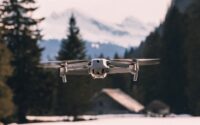A Unique Role in the Colony
Can Drone Bees Sting?
- No, drone bees cannot sting as they lack a stinger.
- Drones are male bees whose main purpose is to mate with the queen bee.
- Their bodies are not equipped with a stinger, unlike female worker bees.
- Worker bees are the ones responsible for defending the hive and stinging when threatened.
- Drones have larger eyes, slimmer bodies, and make up a smaller portion of the bee population.
- Their primary function is to mate with a queen from another colony to ensure genetic diversity.
- Drones are often expelled from the hive during the winter months when resources are scarce.
- While they lack stingers, drones contribute to the overall health and survival of the bee colony.
- They aid in temperature regulation and hive maintenance, but do not participate in foraging or nectar collection.
- The absence of a stinger in drones is a key characteristic that differentiates them from worker bees.
- Worker bees, which are females, have a barbed stinger that can detach, causing the bee to die after stinging.
- Drones, on the other hand, do not have the physical apparatus necessary for stinging.
- Beekeepers often focus their attention on maintaining healthy worker bee populations for honey production.
- Drone bees are typically tolerated by worker bees until their purpose for mating is fulfilled.
- After mating, drones are often driven out of the hive or even killed by worker bees.
- It is important to note that honeybees are not the only type of bees; different species have different behaviors.
- While drone bees cannot sting, there are other species of bees, like bumblebees, that possess the ability to sting.
- Understanding the roles and characteristics of different types of bees helps in appreciating their ecological significance.
- The complex social structure within a bee colony ensures the survival and reproductive success of the species.
The Role of Drone Bees
Drone bees, also known as male bees, play a vital role in the survival and reproduction of honeybee colonies. Unlike female worker bees, drone bees do not possess a stinger, and therefore, cannot sting. This absence of a stinger sets them apart from the queen and worker bees.
Drone bees are primarily responsible for mating with virgin queen bees. Their main function is to fertilize the queen and ensure the continuation of the colony. They are larger in size compared to worker bees and have distinct physical characteristics such as larger eyes and a bulkier body.
During the mating season, drone bees leave the hive and congregate in areas known as drone congregation areas (DCAs). These areas serve as meeting points for drones from different colonies, allowing genetic diversity in the mating process. When a queen bee is ready to mate, she flies to a DCA and attracts drones through the release of pheromones.
Once a drone successfully mates with a queen, its mating act is fatal. The drone’s endophallus ruptures, causing it to die shortly after mating. This sacrifice ensures that the queen receives sufficient sperm to fertilize her eggs, and the genetic material of the drone is passed on to future generations.
While drone bees do not possess the ability to sting, their presence within the colony is crucial. They contribute to the social dynamics of the hive, assisting in maintaining temperature regulation and serving as a backup workforce when needed. Although they do not engage in foraging or other tasks like worker bees, their role in reproduction is vital for the survival and growth of the honeybee colony.
Anatomy of a Drone Bee
Drones are male bees in a colony whose primary purpose is to mate with the queen bee. They play a crucial role in the reproductive cycle of honey bees. Unlike worker bees, drones lack stingers, making them incapable of stinging.
Drone bees possess distinct anatomical features that distinguish them from other bees. Their bodies are typically larger and more robust, with larger eyes to aid in locating queens during mating flights. They also have shorter mouthparts as they do not collect nectar or pollen like worker bees.
One notable characteristic of drone bees is their lack of pollen baskets on their hind legs. This absence allows them to have a sleeker and more streamlined body, which aids in their ability to fly swiftly and mate with queens from other colonies.
Drone bees are raised in large numbers during the spring and summer seasons when queens require mating partners. However, their lifespan is relatively short compared to worker bees. After mating, drones die or are expelled from the hive as the colony prepares for winter.
While drone bees cannot sting, they do have a reproductive organ called the endophallus. During mating, the endophallus is transferred to the queen and subsequently detached from the drone. This process results in the drone’s death.
No Stinger, No Sting
Drone bees are fascinating creatures in the world of honeybees. Unlike their female counterparts, the worker bees and the queen bee, drones are male bees with a unique purpose. However, when it comes to stinging, drone bees have a distinct characteristic that sets them apart.
Firstly, let’s understand the anatomy of a bee. A honeybee’s stinger is connected to its venom sac, allowing it to inject venom into a potential threat or enemy. However, this stinger is a modified ovipositor, which is a structure primarily used by females for egg-laying. As drones are male bees, they do not possess an ovipositor and, therefore, lack the ability to sting.
Why do drone bees lack stingers? Drones have a specific role in the honeybee colony: mating with the queen. Their main focus is to locate a queen during the mating flight and transfer their genetic material. This singular purpose renders the need for a stinger unnecessary, as drones do not participate in foraging or defending the hive like worker bees.
In terms of appearance, drone bees can be distinguished from worker bees and the queen by their larger size and broader bodies. They have larger eyes, which aid in spotting queens during their mid-air rendezvous. Drones are often seen congregating in drone congregation areas, waiting for the arrival of a queen.
Although drones cannot sting, they still play a vital role in the survival of honeybee colonies. Their contribution to the continuation of the species through mating ensures genetic diversity, which is essential for the overall health and adaptability of the hive.
Drone Bee Behavior
- Can drone bees sting? No, drone bees do not possess stingers like their female counterparts, worker bees.
- Drone bees are male bees whose primary role in the hive is reproduction.
- They are larger in size compared to worker bees, with bulky bodies and large eyes.
- Drone bees do not participate in foraging for nectar or pollen or in any other hive-related tasks.
- Their main responsibility is to mate with virgin queens from other colonies.
- Drone bees are known for their unique flight patterns, often congregating in specific areas known as drone congregation areas (DCAs).
- These areas are usually high in the sky and serve as meeting points for drones from various hives.
- Drones emit pheromones to attract queens, and the competition among drones can be fierce.
- While drones do not have stingers, they do have a mating organ, or endophallus, which they use during mating.
- After mating, the drone’s endophallus is detached, resulting in its death.
- Drones have a short lifespan, typically ranging from a few weeks to a few months, depending on the season.
- During the winter months, drones are expelled from the hive as they consume resources without contributing to the hive’s survival.
- Overall, drone bees play a crucial role in the reproductive success and genetic diversity of honeybee colonies.
The Life Cycle of Drone Bees
Drone bees play a crucial role in the life cycle of a honey bee colony. Unlike worker bees and queen bees, drones are male bees. They don’t possess a stinger like their female counterparts, making them incapable of stinging.
The drone larvae are fed with a special substance known as royal jelly. They are exclusively fed this high-nutrient food for the first few days. As they grow, they are also given a mixture of pollen and nectar.
Within the drone cells, the larvae undergo several molts. They shed their outer layer, growing larger with each molt. This process continues until they reach their full size. Once the larvae have completed their growth, they enter the pupal stage.
During the pupal stage, the drone larvae undergo metamorphosis. They are sealed within a cocoon-like structure, where they develop into adult drone bees. days.
When the adult drones are fully developed, they chew their way out of the cells. They emerge from the honeycomb and begin their role within the colony. The primary purpose of drones is to mate with virgin queen bees from other colonies.
However, the life expectancy of drones is relatively short compared to worker bees. days. They are expelled from the hive during the winter months when resources are scarce, as they are considered non-essential to the survival of the colony.
Importance to the Colony
Can drone bees sting? No, drone bees are unable to sting because they lack a stinger. Their primary role is to mate with the queen bee, contributing to the colony’s survival. Drones are male bees that emerge from unfertilized eggs laid by the queen. They develop distinct eyes, larger bodies, and are characterized by a loud buzzing sound. Although drones do not have a stinger, they play a crucial role in the bee colony. Their presence ensures genetic diversity within the colony, promoting overall colony health. During mating flights, drones pursue queens from other colonies, resulting in genetic mixing. This genetic variation strengthens the colony’s resilience against diseases and environmental changes. Apart from mating, drones have limited responsibilities within the hive. They do not participate in tasks such as nursing brood or foraging for nectar and pollen. Their lifespan is relatively short, ranging from a few weeks to a few months. Once the mating season ends, drones are expelled from the hive by worker bees. This expulsion conserves resources for the survival of the queen and the worker bees. Although drones may seem less industrious compared to worker bees, their importance to the colony should not be underestimated. Without their role in reproduction, the colony would not be able to maintain a healthy population. So, while drones may not have a stinger, their contribution to the overall well-being of the colony is significant.
The Future of Drone Bees
Can drone bees sting? No, they cannot. Unlike their female counterparts, drone bees lack a stinger.
Drone bees are male bees whose primary role is to mate with the queen bee. They are larger in size compared to worker bees, but they don’t possess any defense mechanism. Drone bees don’t have a stinger, which means they are incapable of stinging humans or other creatures.
In recent years, drone bees have gained significant attention due to their potential role in pollination and the future of agriculture. As natural bee populations decline, scientists are exploring innovative ways to address the pollination crisis. One solution being explored is the use of drone bees.
These robotic bees, equipped with artificial intelligence and sensors, can mimic the pollination process. They are programmed to collect pollen from flowers and transfer it to other plants, just like their natural counterparts. With advancements in technology, drone bees have the potential to become efficient pollinators, aiding in crop production and ensuring food security.
The use of drone bees also comes with its challenges. Ensuring the proper programming and navigation of these robotic insects is crucial to avoid unintended consequences. Scientists are working on refining their algorithms to ensure precise pollination without any negative impact on the ecosystem.
Another aspect to consider is the acceptance of drone bees by natural pollinators. Introducing robotic bees into an ecosystem could potentially disrupt the interactions between plants and insects, affecting the natural balance. Careful research and monitoring are necessary to evaluate the long-term effects of using drone bees in agriculture.



